7th May - 13th May
Partner Company: Bittersuite
Brief: Re-design the acoustic properties of a physical space
Group: Ula Rodakowska, Sebastian Ervi, Kate Chernysheva
Partner Company: Bittersuite
Brief: Re-design the acoustic properties of a physical space
Group: Ula Rodakowska, Sebastian Ervi, Kate Chernysheva
EXPLORING METAPHOR
This week, I felt like we needed to look at the brief from a different perspective. Following last week's meeting with Steph, I realised that what we have been trying to do is very similar to what Bittersuite already does. Hence, I decided to suggest to my team to conduct deeper analysis into their work in order to look for an opportunity that might also help us to narrow down our ideas and directions. As a result, we made a list of things that exist within Bittersuite experiences and decided to think of completely contrasting things to it.
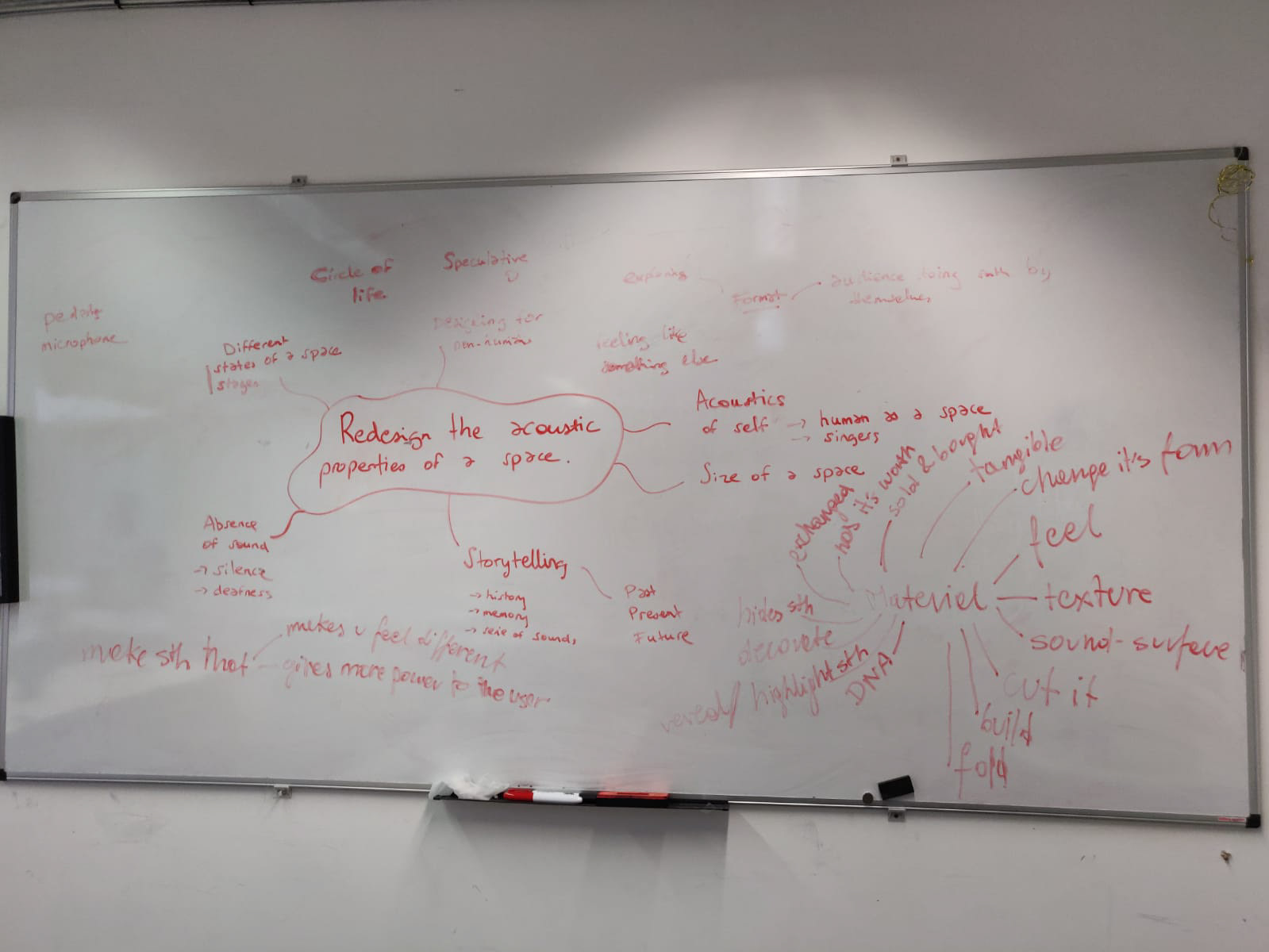
Our metaphor brainstorm of the brief. Picture taken by Kate.
This week's reading was also especially fitting as it explored the process of problem framing through metaphor (Dorst et al.,2015). It gave us a new perspective of framing our own problem. We immediately started brainstorming to try and see what are the things that could stand for sound without being sound and so on. It was a very interesting exercise and we managed to explore sound as a material and acoustics as a cooking process and it made us think in a more abstract way. Like, 'what if we design an experience for a pigeon?' and so on.

Dorst et al. (2015) metaphorical frame table.


Mapping metaphorical frames between different elements drawn from Dorst et al. (2015) ideas from the weekly reading. Developed collaboratively.
EXPLORATION
However, it didn’t help us at this stage because we still lacked our space. Ula proposed that it could be interesting if we pick something that most people take for granted, something completely ordinary which we will make sonically attractive. Therefore, Ula and I went on an exploratory walk to try and pay attention to different objects, sounds, spaces, etc. During our walk we explored various types of benches, litter bins, telephone booths etc. After a long walk we decided to take a closer look at the bench we sat on and experiment. We were finally doing something physical, trying to make sounds and interact with the bench which felt different, yet right. Due to some difficulties, Sebastian couldn't be with us in person, but he was there in spirit and went on his own walk later on presenting his own findings. The research in the background continued...
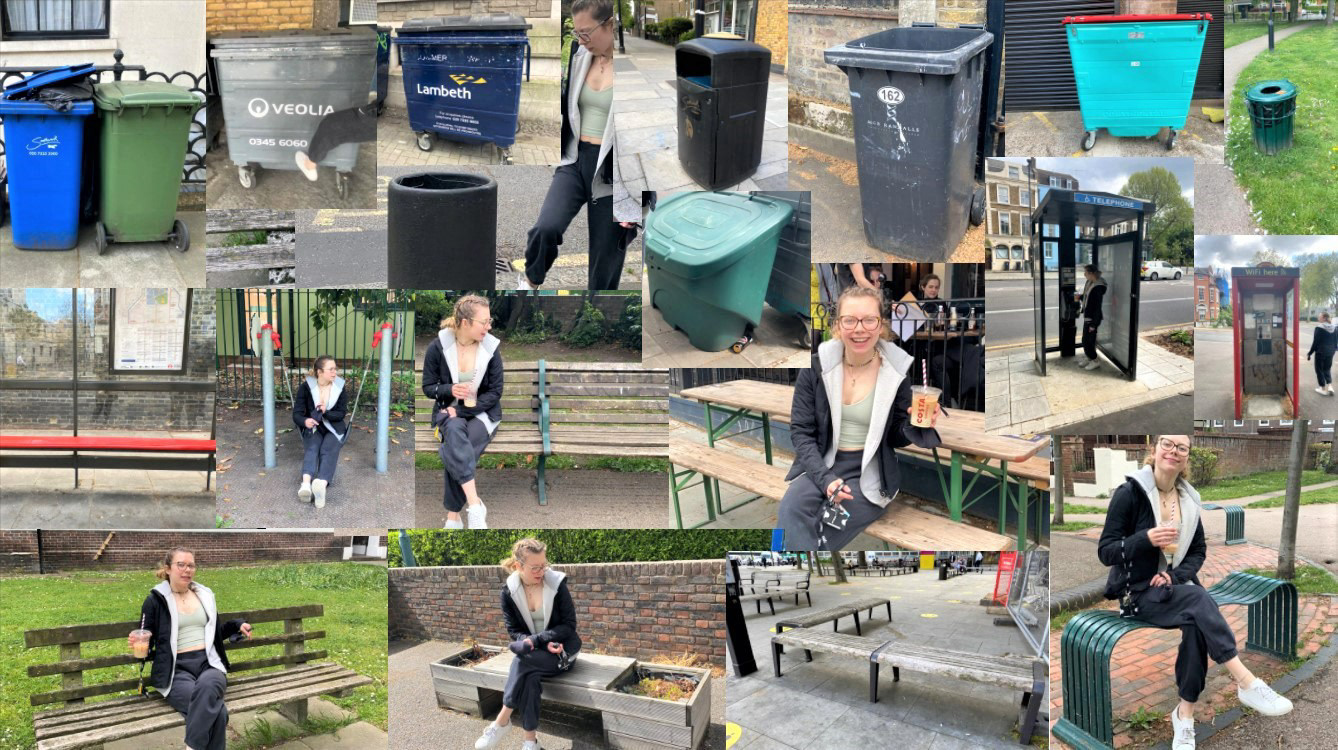
Some photos from our exploration. Photos taken by Kate.


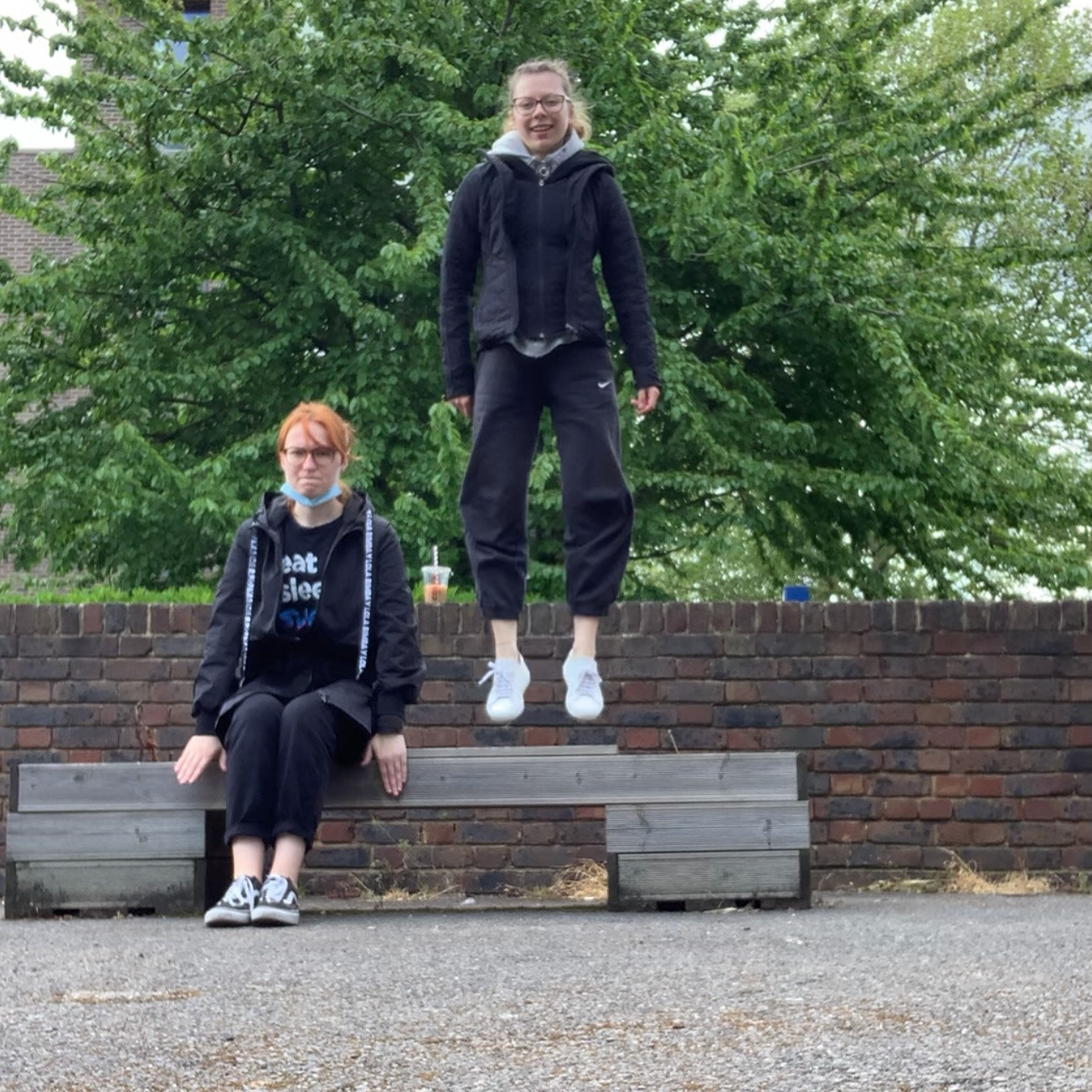
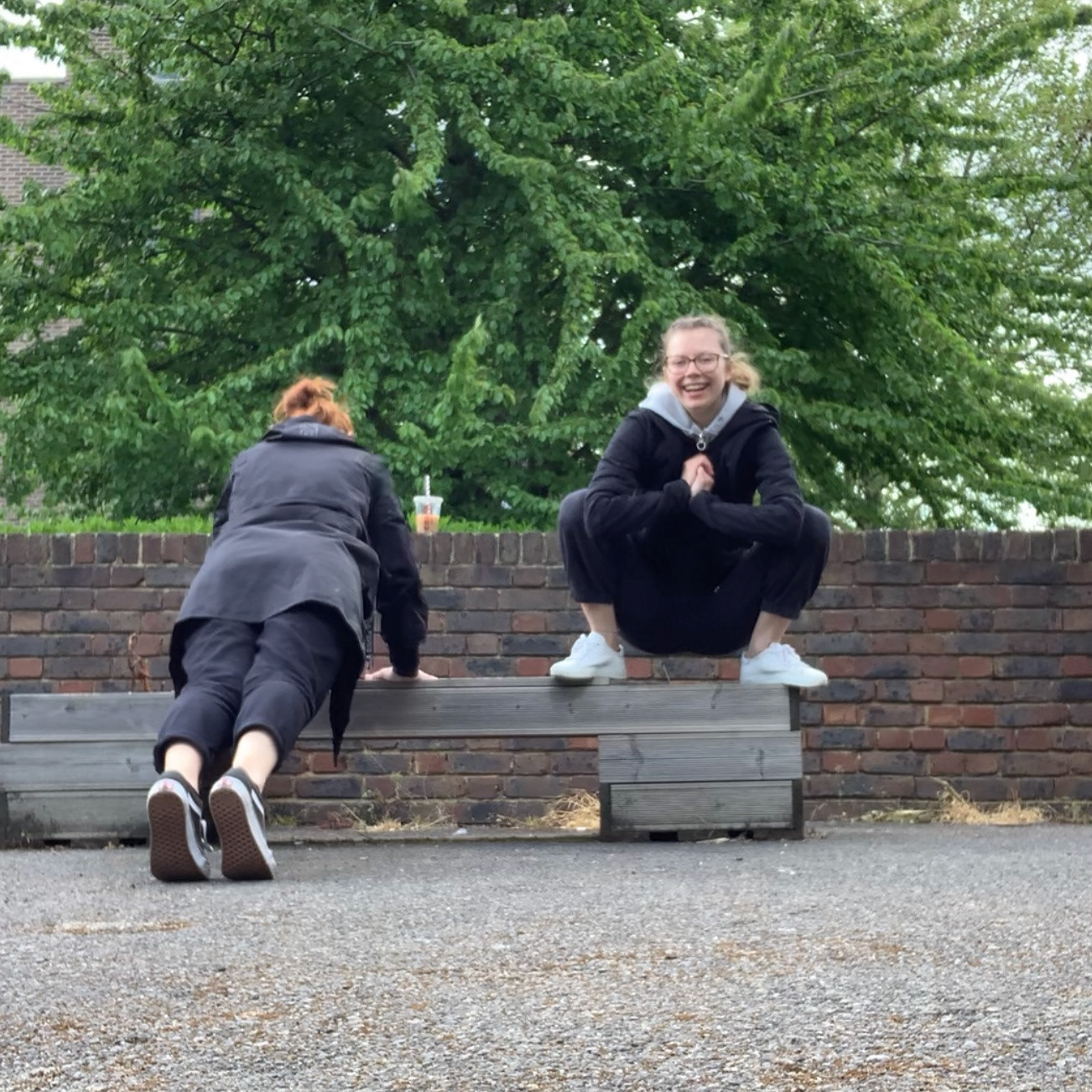
Ula and I exploring the affordances of the bench. Photos by Ula.

Sebastian's exploration outcome. To listen click here.
King's College Choir using helium in order to achieve the needed pitch which we found to be an interesting notion of the acoustics of self. Video embedded from YouTube.
Sonic bench. Video embedded from YouTube.
Exploring different sound notions from literature. Scan from the book 'The senses : design beyond vision' by Lupton, Lipps and Cooper-Hewitt Museum, 2018.
MEETING WITH TANYA
This week we also met with Tanya, a composer who works with Bittersuite. We were very curious to know more about her process, how does she make music, what inspires her, etc. It was very helpful to meet with her and hear her thoughts about our brief. She gave some tips and advice as well as shared her own work with us. She urged us to not be afraid to experiment and start testing our prototype as soon as possible as it gives us a sense of the effect it has on people which can be inspiring.
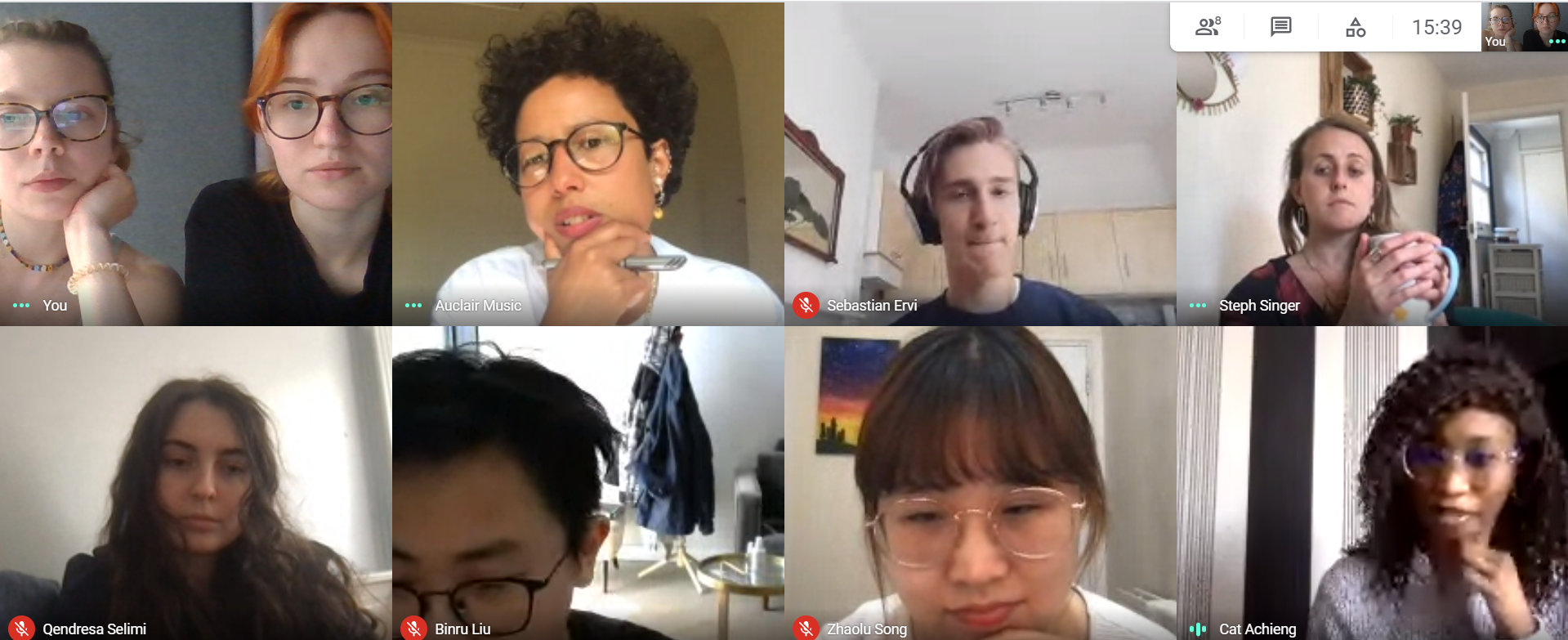
Meeting with Tanya. Screenshot taken by Kate.
PRESENTATION & FEEDBACK
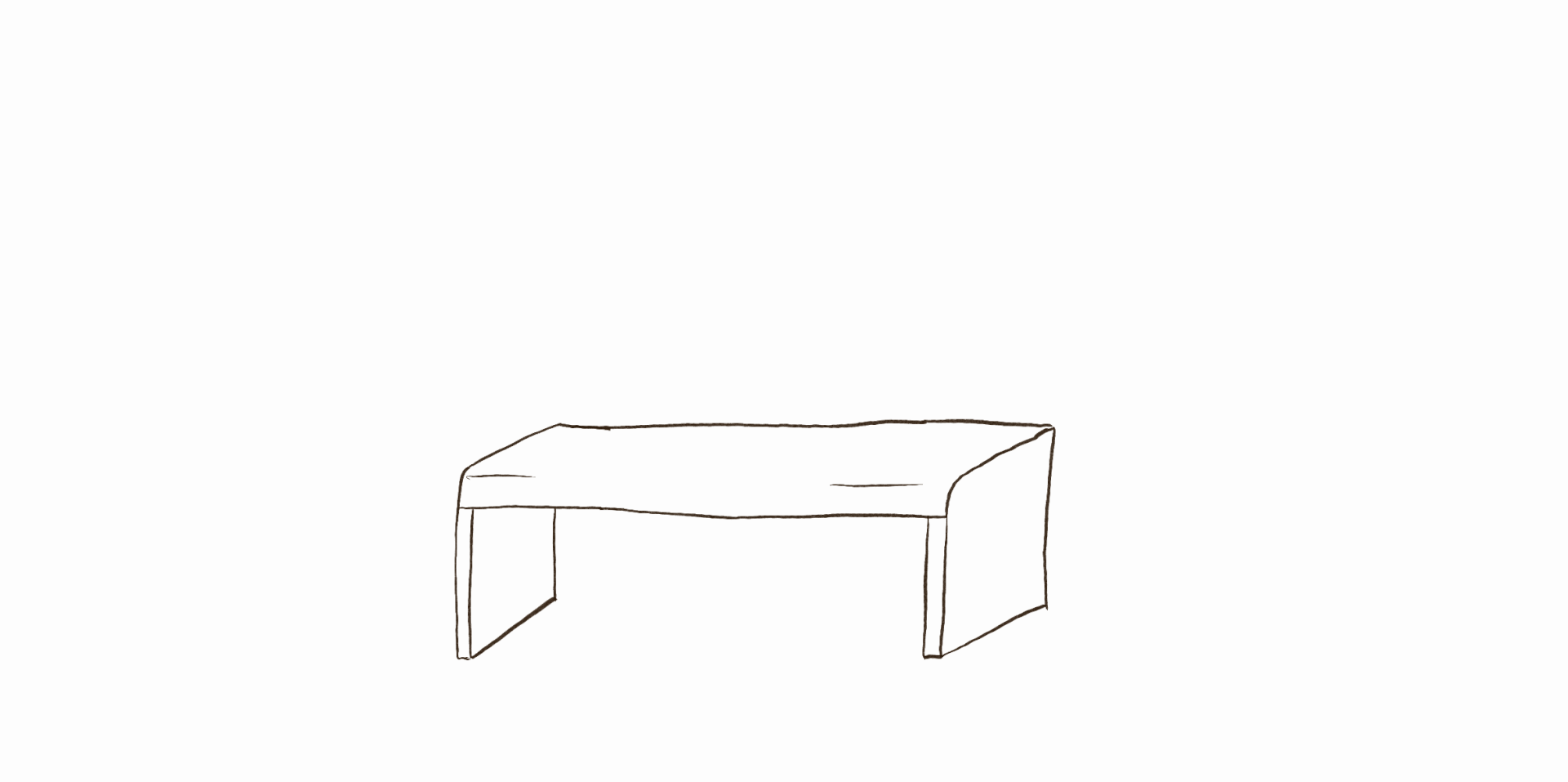
A gif made for our presentation to represent our possible future development. Illustrated by Kate.
Upon presenting our progress to everyone we received overall positive and encouraging feedback. However, the main point once again was 'this is a sound project. where is the sound?' which we agreed with. We presented our ideas about making a mundane object sonically interesting and everyone seemed to be excited. John also told us to try and explore the relations between things, not just one object - could a bench be a radio station? or means to communicate between two different places through benches? However, we were still unsure what our space is and with only one week to go until mid-point review the pressure was on.
BIBLIOGRAPHY
Blesser, B. and Salter, L., 2009. Spaces speak, are you listening?. Cambridge, MA: MIT Press.
Fowler, M.D. (2013). Soundscape as a design strategy for landscape architectural praxis. Design Studies, 34(1), pp.111–128.
Haverkamp, M. (2013). SYNESTHETIC DESIGN : handbook for a multi-sensory approach..
Milo, A. and Reiss, J. (2017). Aural Fabric: an interactive textile sonic map.
Pee, S.H., Dorst, K. and van der Bijl-Brouwer, M., 2015, November. Understanding problem framing through research into metaphors.
Quote:
Lupton, E., Lipps, A. and Cooper-Hewitt Museum (2018). The senses : design beyond vision. New York, Ny: Copper Hewitt, Smithsonian Design Museum ; Hudson, Ny., p. 156
Lupton, E., Lipps, A. and Cooper-Hewitt Museum (2018). The senses : design beyond vision. New York, Ny: Copper Hewitt, Smithsonian Design Museum ; Hudson, Ny., p. 156
Sonic bench:
https://www.youtube.com/watch?v=wMb2fNmzpGI
https://www.youtube.com/watch?v=wMb2fNmzpGI
King's College Choir:
ttps://www.youtube.com/watch?v=ukDAfF0-8q8
ttps://www.youtube.com/watch?v=ukDAfF0-8q8
Tanya's project 'Ruzunguzungu':
https://vimeo.com/536847432
https://vimeo.com/536847432